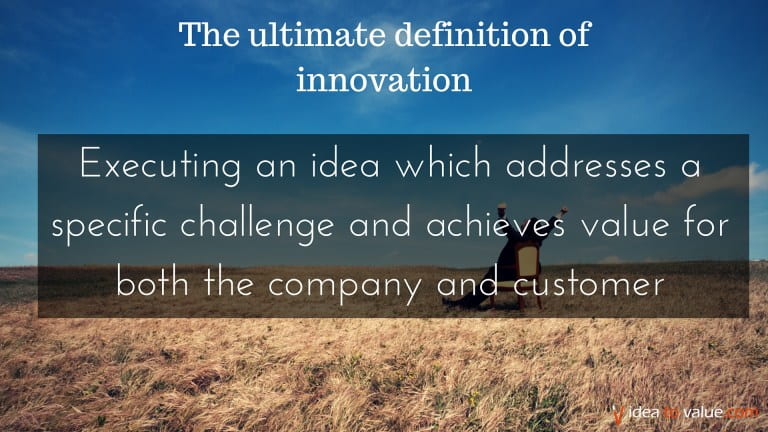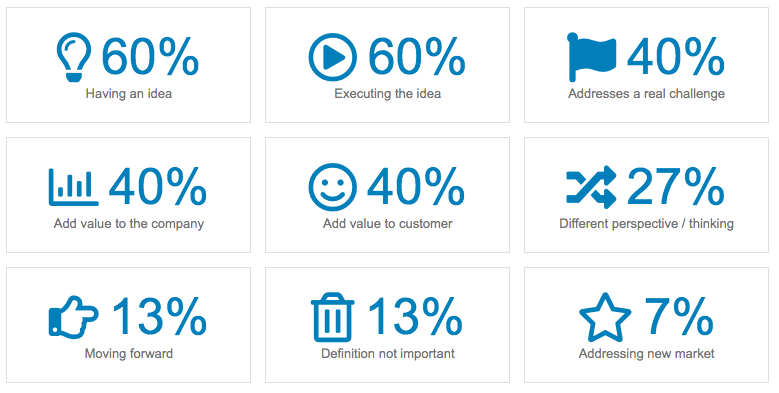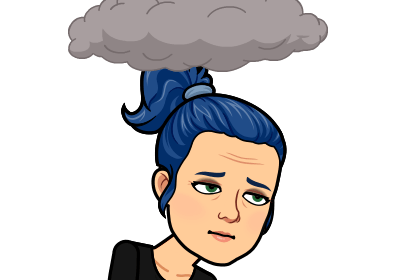“Change management is important but change leadership is essential” (Pennington, n.d.). Leadership versus Management:
Have a clear understanding about the difference between leadership and management, because if something turbulent happens that means an organisation or school is required to implement change and we are stuck in management tasks, we can’t lead (Kotter, 2013).
Therefore, leadership (leading) is: creating a strategy and vision for the future and creating an environment that motivates others to join the vision and strategy; whereas management (functional) is: planning, budgeting, organising, staffing controlling and problem solving (Kotter, 2013).
[I won’t write too much more about management versus leadership because I think I’ve written loads about this in my blog posts for ETL503 Resourcing the Curriculum]

Innovation versus change:
 I think we also need to have a clear definition as to what is innovation versus change. The two seem to be being used interchangeably in this course, and in some ways that could be dangerous, particularly given the ‘change fatigue’ discussed in my previous post(s). Innovation is change that is adding value for both the company and the customer [as detailed by Nick Skillcom from Idea to Value (2019)], but change doesn’t necessarily do this and promoting a ‘change culture’ frightens me. We need to remember to match innovation (and subsequent change) to goals. Perhaps a ‘change culture’ is an innovative culture that is open to change, but not necessarily constantly changing?
I think we also need to have a clear definition as to what is innovation versus change. The two seem to be being used interchangeably in this course, and in some ways that could be dangerous, particularly given the ‘change fatigue’ discussed in my previous post(s). Innovation is change that is adding value for both the company and the customer [as detailed by Nick Skillcom from Idea to Value (2019)], but change doesn’t necessarily do this and promoting a ‘change culture’ frightens me. We need to remember to match innovation (and subsequent change) to goals. Perhaps a ‘change culture’ is an innovative culture that is open to change, but not necessarily constantly changing?

These are interesting, given the wording of the principal standards from the Australian Institute for Teaching and School Leadership (AITSL): “Identify the need for innovation and improvement; Develop a process and common language for change; Maintain their values whilst adapting flexibly and strategically to changes in the environment; Embed a culture of continuous improvement (AITSL, 2015).
Innovation: In order to recognise necessary innovations, I need to identify my passion. What’s my passion? Literacy. Quality literature. Education of children. Helping others find their passion. Encouraging colleagues to promote the social and emotional learning of students.
Professional Goals: 1. linking my practices to research; 2. linking my practices to the ASLA librarian standards.

Leading from the middle:
The whole premise behind this is to build capacity in others, which is what we do as teachers every day (Gottlieb, 2012). First we must lead by doing, and must get to know our team at a personal level. Gottlieb (2012) has many ideas about how to run a meeting or series of meetings to achieve this.
 Morning meetings that build personal connections link to the teacher/students’ ‘morning meeting’ idea in the new wave of positive behaviour for learning and trauma informed practice pedagogy promoted by the Berry Street Educational Model (BSEM) or the Responsive Classroom.
Morning meetings that build personal connections link to the teacher/students’ ‘morning meeting’ idea in the new wave of positive behaviour for learning and trauma informed practice pedagogy promoted by the Berry Street Educational Model (BSEM) or the Responsive Classroom.
Gottlieb (2012) also suggest we create a website page of our team ‘biographies’ to help team members get to know each other and reinforce such things as: What are your values or strengths? What excites you about our strategic plan or mission? Why are the things we do in our library important? What is your personal journey that has brought you here, or what is your personal teaching and learning philosophy?
 Well hell’s bells, I thought of this ‘Spotlight’ idea too about two years ago and my supervisor at the time thought it was a great idea! Unfortunately, his son fell ill and he had to move away before the idea came to fruition (and his replacement did not renew my contract). Time to dust off the idea and utilise it in my future library!
Well hell’s bells, I thought of this ‘Spotlight’ idea too about two years ago and my supervisor at the time thought it was a great idea! Unfortunately, his son fell ill and he had to move away before the idea came to fruition (and his replacement did not renew my contract). Time to dust off the idea and utilise it in my future library!
Implementing an innovation culture (not a change culture!):

Opinion based on my own experience: Changing the work culture in a school is a really big deal. Some might even say, insurmountable. When inundated with ‘top down’ policies, budget constraints, and a ‘to be run like a business’ mantra (influenced by a employment policy for administration staff that literally advocates for nepotism; ‘local schools local decisions;’ promotion on ‘merit’ being rorted – particularly for leadership positions; the bullying of bureaucrats and top-level executives resulting in the bullying of leaders; resulting in bullying of teachers, resulting in bullying of students, resulting in bullying on the playground; the oversupply of teachers (particularly new scheme teachers) in primary and the undersupply in secondary; the push to employ more (new scheme) temporary contract teachers (who struggle with building relationships with students – one of the main indicators of academic success) in primary over offering permanent positions – pitting the temps’ against each other in competition for the few permanent positions that arise; laying off temps in favour of ‘free trial’ teachers in from the city on incentive schemes, etc) trying to change a school culture from the bottom up, (or ‘the middle’ as per Gottlieb, 2012) at this stage is all but futile.
And while I agree that we need to develop as teachers, I am struck by Lortie’s (1975 in Oberg, 2011) terms “presentism, conservatism; and individualism” as being hinders to the change process. When I read this, I saw it as the bureaucratic level trends in society and global political trends rather than or in addition to the trends in teacher attitudes towards ‘change’ / innovation.
A Google dictionary search defines the terms as: “Presentism: uncritical adherence to present-day attitudes, especially the tendency to interpret past events in terms of modern values and concepts.”…”Conservatism: commitment to traditional values and ideas with opposition to change or innovation; (or) the holding of political views that favour free enterprise, private ownership, and socially conservative ideas.”…”Individualism: the habit or principle of being independent and self-reliant; (or) a social theory favouring freedom of action for individuals over collective or state control.”
Wealth doesn’t ‘trickle down,’ but leadership attitudes seem to, as supported by Harvard Business Review (Zenger & Folkman, 2016).
The trick is to try to stop the ‘trickle down’ effect from reaching the students – and in that, the buck stops with me! I’m reminded of the social emotional lesson (learned from BSEM trauma informed practice teacher training) that I teach to students about things they can control. (I can’t control the bureaucrats or political arena, but I can control myself!)
 Thus, to combat anti-innovative mindsets, I will aim to address my personal presentism, conservatism and individualism mindset(s) through: professional development, personal reflection, collaboration, questioning the validity of top-down changes (such as data collection, standardised testing, and mandatory curriculum), as well as battling the conservative practices of social inequity and lack of cohesion that trickle down to school inequities–further disadvantaging marginalised students (Oberg, 2011).
Thus, to combat anti-innovative mindsets, I will aim to address my personal presentism, conservatism and individualism mindset(s) through: professional development, personal reflection, collaboration, questioning the validity of top-down changes (such as data collection, standardised testing, and mandatory curriculum), as well as battling the conservative practices of social inequity and lack of cohesion that trickle down to school inequities–further disadvantaging marginalised students (Oberg, 2011).
 Regarding ‘top down’ changes and conservative practices: I will confidently ask my team(s) the question: ‘How can this innovation (such as a behaviour peg chart or stoplight ‘welfare’ policy), which is intended to improve teaching and learning, contribute to making a difference for all stakeholders and all students, or will it make a difference only for those already advantaged (such as those who are meeting outcomes, have social capital, or who come from economically stable, privileged backgrounds)?’ (Oberg, 2011 p.2).
Regarding ‘top down’ changes and conservative practices: I will confidently ask my team(s) the question: ‘How can this innovation (such as a behaviour peg chart or stoplight ‘welfare’ policy), which is intended to improve teaching and learning, contribute to making a difference for all stakeholders and all students, or will it make a difference only for those already advantaged (such as those who are meeting outcomes, have social capital, or who come from economically stable, privileged backgrounds)?’ (Oberg, 2011 p.2).
 I will get to know the teaching and learning philosophies influencing teaching practices, the school’s attitudes towards innovation (or if it is simply ‘change’), how the teachers interact (in isolation or collaboratively), the executive team roles and goals, and the methods for determining success – both professionally and academically (Pratt, 2017; Oberg, 2011, p.2; Green 2011).
I will get to know the teaching and learning philosophies influencing teaching practices, the school’s attitudes towards innovation (or if it is simply ‘change’), how the teachers interact (in isolation or collaboratively), the executive team roles and goals, and the methods for determining success – both professionally and academically (Pratt, 2017; Oberg, 2011, p.2; Green 2011).
 I will proactively start in ‘my’ library by being patient with the innovation process (Pratt, 2017; Oberg, 2011), working flexibly and collaboratively with all stakeholders, setting SMART goals that are based on both the school mission/strategic plan/library mission/strategic plan of improving teaching and learning as well as based on evidence/research based innovations of 21st century teaching practices such as differentiation (Oberg, 2011; Green 2011).
I will proactively start in ‘my’ library by being patient with the innovation process (Pratt, 2017; Oberg, 2011), working flexibly and collaboratively with all stakeholders, setting SMART goals that are based on both the school mission/strategic plan/library mission/strategic plan of improving teaching and learning as well as based on evidence/research based innovations of 21st century teaching practices such as differentiation (Oberg, 2011; Green 2011).
Things I currently lack but need in a future teacher librarian role (according to Green (2011, p.23)): “established authoritative position, credibility amongst peers, a vision that is based on best practice and, importantly, a mandate to implement or produce change (innovation).”
 I need to utilise my skills in linking practice to researched evidence, marketing, ICT and QTR (as well as from training and experience received from BSEM, L3, AL and TEN, etc) in my library and collaborate with teachers, offering professional development in these areas, in order to help them utilise evidence-based practices, helpful computer technologies, effective lesson structures or to professionally and collaboratively evaluate their lessons or units of work (Green 2011).
I need to utilise my skills in linking practice to researched evidence, marketing, ICT and QTR (as well as from training and experience received from BSEM, L3, AL and TEN, etc) in my library and collaborate with teachers, offering professional development in these areas, in order to help them utilise evidence-based practices, helpful computer technologies, effective lesson structures or to professionally and collaboratively evaluate their lessons or units of work (Green 2011).
References
Australian Institute for Teaching and School Leadership (AITSL). (2015). Interactive leadership profiles. In AITSL.Retrieved from https://legacy.aitsl.edu.au/leadership-profiles/interactive-profiles/leading-improvement-innovation-and-change
Gottlieb, H. (2012, October 30). Leading from the middle: Bringing out the best in everyone [Blog post]. Retrieved from https://creatingthefuture.org/leading-from-the-middle-bringing-out-the-best-in-everyone/
Green, G. (2011). Learning leadership through the school library. Access, 25(4), 22-26. Retrieved from http://www.asla.org.au/publications/access.aspx
Kotter, J. (2013, August 15). The key differences between leading and managing [Video file]. Retrieved from https://www.youtube.com/watch?v=SEfgCqnMl5E [4.23 mins].
Oberg, D. (2011). Teacher librarians as cultural change agents. SCIS Connections, 79. Retrieved from https://www.scisdata.com/media/1353/connections-79.pdf
Pennington, R. (n.d.). How to make change work. In Educational leaders: Leading and managing change. Retrieved from http://www.educationalleaders.govt.nz/Leading-change/Leading-and-managing-change
Pratt, A. (2017). The challenge of implementing change. SCIS Connections, 103. Retrieved from https://www.scisdata.com/connections/issue-103/the-challenge-of-implementing-change
Skillcom, N. (2019). What is innovation? 15 experts share their innovation definition. Retrieved from https://www.ideatovalue.com/inno/nickskillicorn/2016/03/innovation-15-experts-share-innovation-definition/
Zenger, J. & Folkman, J. (2016). The trickle down effect of good and bad leadership. Harvard Business Review. Retrieved from https://hbr.org/2016/01/the-trickle-down-effect-of-good-and-bad-leadership

